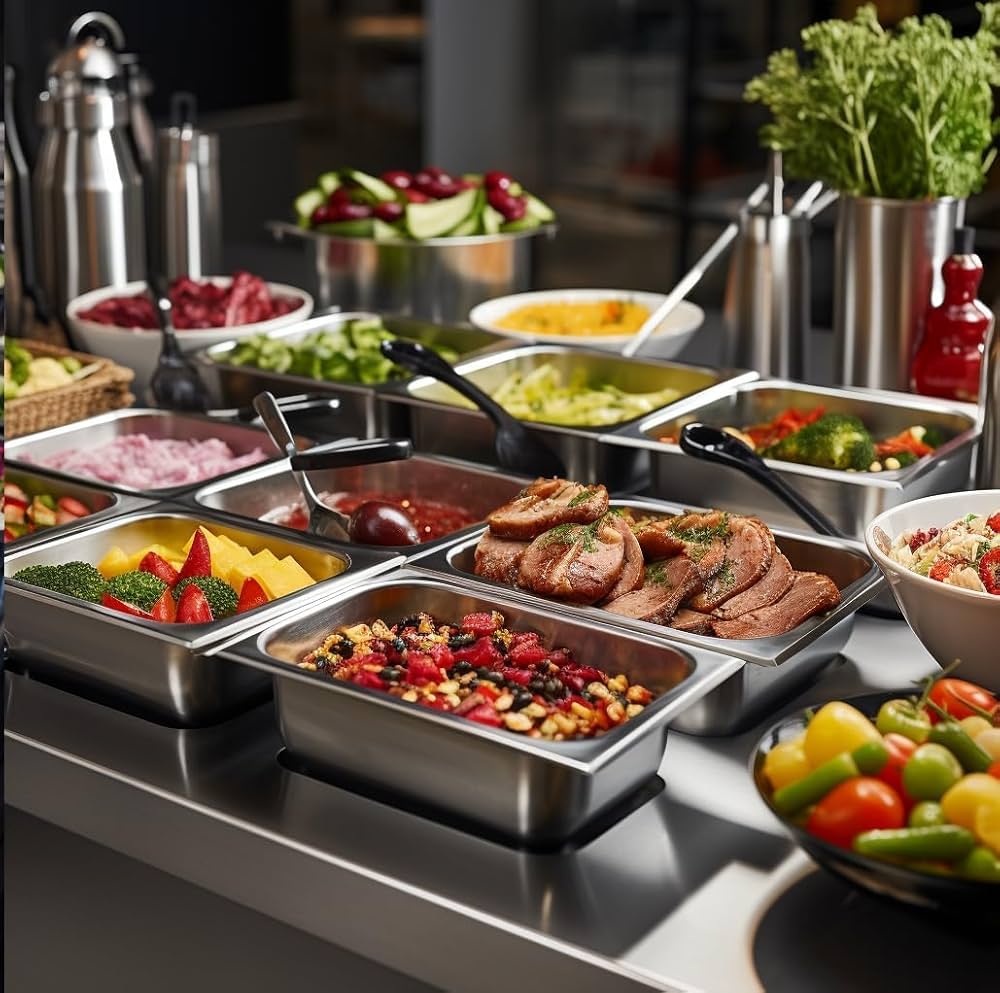
How To Identify GN Containers Designed For Specific Uses: Cold Storage, Heating, And Serving
Finding the right GN container for cold storage, heating, or serving is key to maintaining efficiency and quality in your...

Get 20€ off on your first order!
Selecting the appropriate garbage bags for your workplace can greatly affect how well you handle trash, how clean it is, and how safe it is. The purpose of this book is to help European businesses make decisions that are in line with environmental and safety standards for workers.
The types of trash that people leave at work vary, from normal office trash to dangerous materials in industry settings. To choose the right trash bag, you should first know what kind of trash your business makes and how much of it there is.
The best bag material, width, and size will depend on the type of trash and how much of it there is.
The choice of trash bags at work is based on a number of factors. Here is a list of the most important points.
Garbage bags come in different materials, each with benefits suited to specific environments:
Choosing the right material type ensures durability and reduces the risk of tearing or leakage.
Selecting the appropriate size minimizes the frequency of bag replacements and overflow. Bag capacities typically range from small (10–15 liters) for personal use to extra-large (240+ liters) for industrial bins. Here are some guidelines:
Using the right size improves efficiency and reduces waste management costs.
Bag thickness is often measured in microns (μm) or mils. Thicker bags provide better puncture and tear resistance:
By picking the right thickness based on the type of trash, you can avoid breaks and leaks and keep the workplace safe and clean.
Color-coded bags help manage waste streams and maintain workplace safety standards. Common color conventions include:
Color coding simplifies sorting and is especially useful in larger workplaces.
Businesses in Europe have to follow their countries’ rules about how to handle waste, including rules that protect the environment and keep workers safe. Here are some important standards to think about:
Following these rules not only makes the workplace safer, but it also makes people more responsible for the world.
As people become more concerned with being environmentally friendly, eco-friendly trash bags are becoming more common. Look out for these things:
Bags made with recycled plastics reduce the demand for virgin plastic materials, helping to lower the environmental footprint. These bags are durable and are suitable for most general waste needs.
Compostable bags break down in composting facilities, which makes them perfect for getting rid of organic garbage. To encourage zero-waste efforts, many places in Europe now require food trash to be put in bags that can be broken down naturally.
Oxo-degradable bags contain additives that help them break down over time when exposed to sunlight and oxygen. They’re suitable for environments with minimal exposure to extreme temperatures or chemicals.
Selecting bags with eco-friendly properties demonstrates a commitment to environmental responsibility and can help meet sustainability goals.
Budget is often a priority in waste management, but it’s essential to balance cost with performance. Here are a few strategies:
Businesses can improve the efficiency of their garbage management without spending too much by finding a balance between quality and cost.
Partnering with reliable suppliers is key to consistent quality. When evaluating suppliers, consider these factors:
Picking a source you can trust helps make sure quality and following working rules.
Proper waste disposal practices are crucial in maintaining workplace cleanliness. Regular garbage removal and the use of durable, appropriate bags reduce the spread of bacteria and other contaminants. In industries like healthcare, rigorous hygiene standards are necessary to prevent infection risks.
Following these practices helps maintain a healthy and sanitary workplace environment.
Adopting efficient waste management practices supports sustainability and enhances workplace safety. Here are a few additional tips:
Implementing these strategies makes waste management more efficient and cost-effective.
Selecting the right garbage bags for your workplace requires careful evaluation of waste types, regulatory standards, and environmental impact. By considering factors such as material type, strength, color coding, and compliance, businesses can make informed decisions that support efficient waste management and promote a safe, hygienic work environment.
With this guide, European workplaces can better align their waste management strategies with industry standards, creating a cleaner, more sustainable, and compliant environment for all employees and stakeholders.
Thank you! You've signed up for our newsletter.



















Finding the right GN container for cold storage, heating, or serving is key to maintaining efficiency and quality in your...

Are you struggling to decide between paper, plastic, or compostable disposable plates? The material you choose directly impacts your events...

Looking for the right Food Service Supplies for your business? Whether you’re in food service, catering, or hospitality, this guide...

Finding the right GN container for cold storage, heating, or serving is key to maintaining efficiency and quality in your...

Are you struggling to decide between paper, plastic, or compostable disposable plates? The material you choose directly impacts your events...

Looking for the right Food Service Supplies for your business? Whether you’re in food service, catering, or hospitality, this guide...
Get 20€ off on your first order!
Save 30% by buying directly from brands, and get an extra 10€ off orders over €100
Save 30% by buying directly form brands, and get an extra 10€ off orders over €100